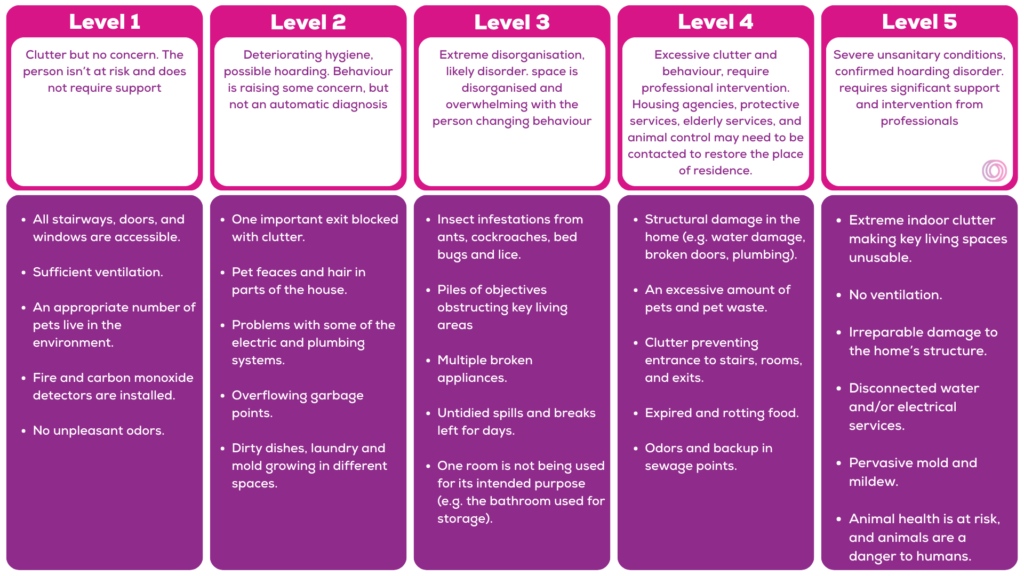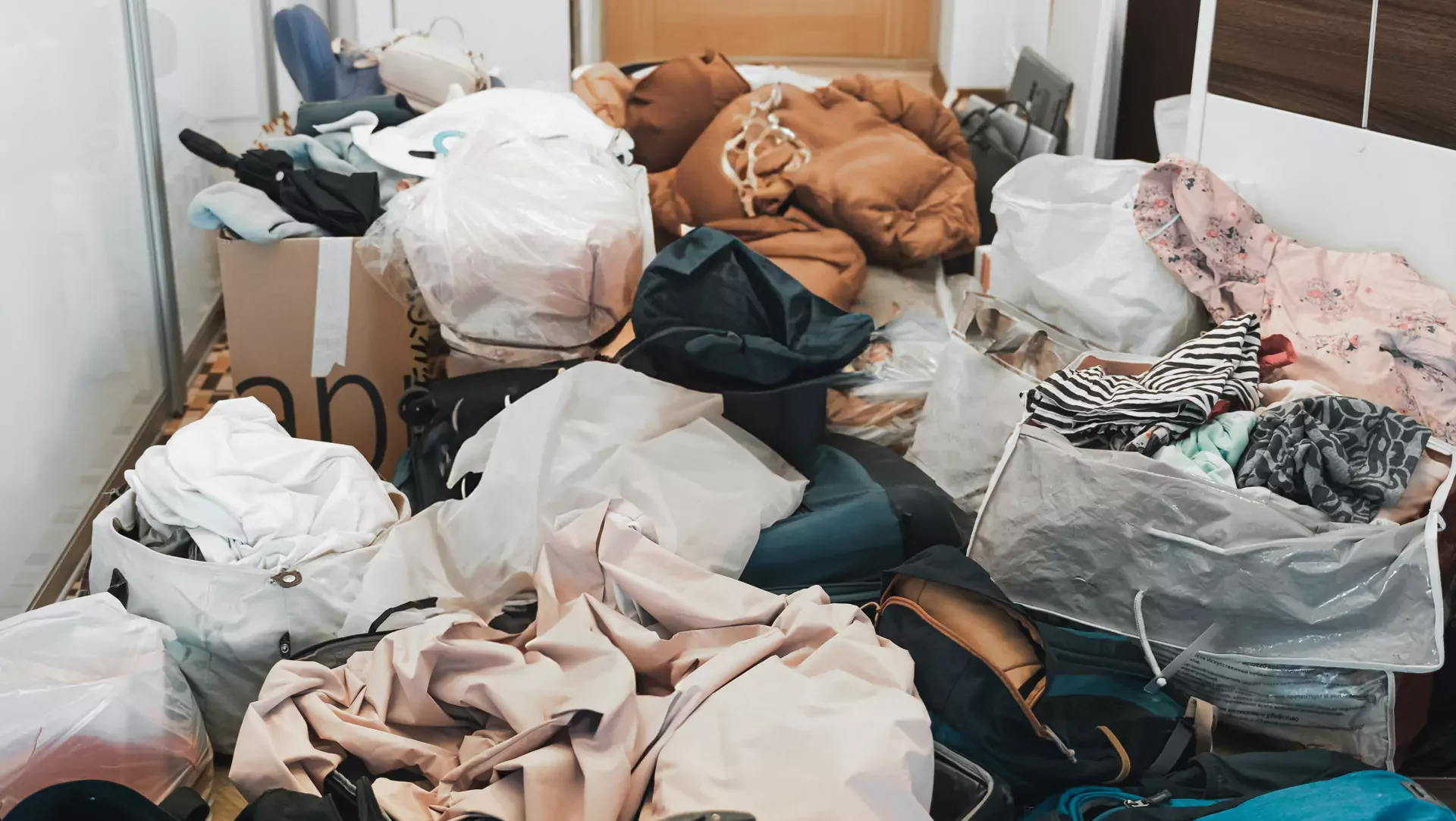“Lazy”, “Disorganised”, “Messy”. These are some of the words you might think if I asked you to describe hoarding. TV shows like “Hoarders” may come to mind, or your friend that has one too many pop culture figurines.
Hoarding is more than just a mess, more than a reality TV show. Hoarding behaviour has deep roots in trauma, a desire to feel in control, attempting to establish a feeling a safety. It can have many faces and complexities, meaning the person needs a strong, informed support team to help.
What is Hoarding Disorder?
Hoarding disorder can be defined as an individual experiencing persistent difficulty throwing away or parting with possessions, regardless of their value. An individual may experience significant distress with discarding items, resulting in accumulation of possessions, leading to clutter and congestion. Hoarding isn’t just about physical clutter; it is often tied to emotional attachment to objects, fear of losing something important, or an overwhelming sense of security in keeping items, even if they serve no practical purpose.
There are different types of hoarding, meaning people will often hoard different items and for different reasons. The most commonly hoarded items are newspaper and magazines, technology parts (either functioning or broken), sentimental objects, groceries, cleaning products, animals and bodily fluids (this is mainly due to key living areas such as a bathrooms being compromised and unusable due to clutter, so fluids are stored elsewhere).
The five different levels of hoarding disorder

Previously, hoarding disorder was believed to be directly linked with obsessive-compulsive disorder, but modern understanding depicts it to be distinct and separate from OCD. This is because hoarding symptoms are more common and not always co-occurring alongside OCD symptoms.
Hoarding behaviour mainly warrants an OCD diagnosis when the behaviour is more bizarre and highly stereotypes. For example, a person is feeling compelled to store bags of household waste within the home. There is a low genetic overlap between hoarding disorder and OCD, with neuroimaging implicating they have different neural pathways.
A large misconception with hoarding is its confusion with collecting. Collecting and hoarding are vastly different, with collecting being a non-pathological hobby that is common (30% of the population collect specific items). Collectors are more likely to use their collected items and display them, whereas those who hoard will view an item as being useful in the future but it will remain unused or underappreciated.
Collectors mostly organise their space, whereas a person who hoards items will spill them across rooms and compromise living areas. Those with hoarding difficulties, however, will often describe themselves as a collector to rationalise behaviour.

The main treatment methods for hoarding include cognitive behavioural therapy, medication, and intervention from allied health professionals such as Behaviour Support Practitioners and Occupational Therapists. The core challenge in treating hoarding behaviour, however, is that it is ego-syntonic, meaning the behaviour is aligned to the person’s self-image. It is part of their values and way of thinking, almost like it is ingrained. Hoarding also has strong links with trauma, meaning not only the behaviour can be addressed, rather its underlying functions.
Why Do People Hoard?
The psychology behind hoarding is that these individuals have often experienced trauma, abuse or significant loss in their life. They then may hoard items to feel a sense of control, which they might not have had in their past.
People who hoard also have emotional attachments to their items, forming deep emotional connections with as they can represent memories, lost opportunities or a sense of identity. This ties into trauma as individuals may hoard items that hold memories from a happier time, or items that make them feel safe.
Hoarding can also be coping mechanism for anxiety, with individuals keeping objects out of fear they might need them later or that they hold value. it has been found that different timing of traumatic events can lead to different types of hoarding.
Apart from trauma, individuals who are more likely to hoard are people with certain cultural beliefs where material possessions are to be transmitted across generations, people who experienced “The Great Depression” as it was important to hold on to necessities and extend their use as well as ration food (think of the COVID-19 epidemic as a recent example), and people with certain personality traits such as perfectionism, avoidant, and schizotypal.
Other reasons for hoarding include:
- Comorbid diagnoses: such as OCD, dementia, depression and/or anxiety, personality disorders, ADHD, Kleptomania, substance use disorder and Prader-Willi Syndrome (people diagnosed with PWS are more likely to attempt to hoard food due to their insatiable hunger)
- Genetics: twin studies suggest that up to 50% of the variance in hoarding behaviours may be genetically linked. It was found that older adults with this disorder reportedly have an average of two biological relatives with symptoms or signs of hoarding disorder.
- Neurocognitive: premature cognitive aging and executive dysfunction, among other cognitive domains are linked to the risk of hoarding disorder.
The Impact of Hoarding
Hoarding can have serious, negative impacts on an individual’s life. The main areas of a person’s life impacted are their:
- Physical and emotional health: the individual may experience difficulty functioning with day to day activities. They can be subject to significant hygiene risks due to mess creating a poor living environment. They may have poor diet due to reduced access to clean cooking spaces or no access to a kitchen at all from excessive clutter.
- There is also significant risk of injury and death due to trip hazards, crushes from items falling, fire hazards, and developing diseases such as COPD and MRSA from unhygienic and non-ventilated living areas. Regarding emotional health, hoarding can lead to feelings of isolation, shame, embarrassment, stress, anxiety and depression.
- Relationships and support: hoarding is often misunderstood by family members and friends, where loved ones can become frustrated or feel hopeless in helping the individual. It is common for a person who hoards to be highly defensive of their possessions, which can increase tension and divide between families. The person’s family and friends may refuse to enter their home due to their clutter. This can also occur with allied health and other supports due to safety and hygiene risks, reducing the individuals ability to access support.
- Financial and legal consequences: hoarding can have practical consequences as well. The accumulation of items can lead to serious financial strain, especially when hoarding results in the inability to sell or donate valuable items or leads to constant home repairs. Hoarding can even have legal issues if living conditions become unsafe or unsanitary, with severe hoards often being reported to local councils and warnings provided. This can then lead to risk of eviction and homelessness.
How can Behaviour Support and other Allied Health Services Assist?
Hoarding requires a multi-disciplinary team to support. This include behaviour support, psychology, psychiatry, occupational therapy, case management and general medicine to review health concerns. This team can work together with the individual to link them in with professional help and services, set realistic goals, and teach healthier coping mechanisms.
From a behaviour support perspective, the Practitioner will work holistically with key stakeholders to assist the individual in achieving their goals. In addressing hoarding behaviour with the individual, the Behaviour Support Practitioner will start with a harm avoidance approach, focusing on immediate hazards to health and safety, then develop a practical plan. They will then complete goal setting, motivational interviewing, increasing skills in organisation, distress tolerance, impulse control and decluttering, and psychoeducation on hoarding and its risks.
The Behaviour Support Practitioner will strive to establish rapport and a sense of trust and safety with the individual, always working at their pace to ensure they feel in control, but providing that gentle push when needed. The Behaviour Support Practitioner will also advocate for additional supports such as NDIS funded professional organiser providers who specialise in hoarding, and hoarding support groups and treatment programs.
Hoarding is a complex, pervasive behaviour that goes far beyond a messy home. It is a mental health condition that requires understanding, patience and professional intervention.
It is important to maintain a compassionate and empathetic approach when working with these individuals. With the right tools, help and commitment, it is possible for them to regain control of their life, living space and wellbeing. The key is recognising the signs early, fostering open communication, and understanding the road to recovery may be slow, but is achievable.
If you, a loved one, or someone you care for is struggling with hoarding behaviour and require support feel free to reach out to ORS by calling 1800 000 677 or submitting a general enquiry below.


